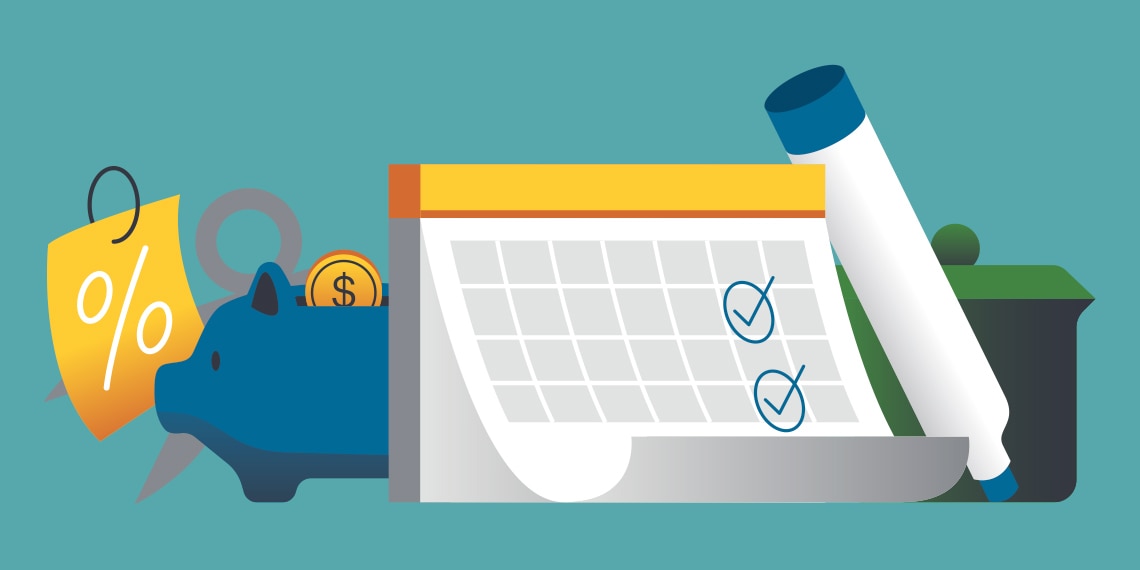
Americans save at notoriously low rates, to the extent that many of us would be hard-pressed to come up with $500 in the event of an unexpected medical bill, an unforeseen car repair or any unanticipated cost. The pandemic-related stimulus payments from the federal government temporarily boosted some of our bank accounts, but those funds have likely dried up for most.
What would it take for you to save $500 in a month? While a few hundred dollars is not the same as an emergency fund (which should equal three to six months of living expenses), having the sum at the ready could help you ride out a small financial emergency.
Saving $500 in a month is also the kind of exercise that can help you learn new skills and strategies to eventually put away larger amounts. Here’s what it takes to put together a solid chunk of savings in a hurry.
Reset Your Mindset
Think of this month as hitting “reset” on your spending habits. You’re not going to stay in an extreme savings mode forever, but you can use this time to practice mindful spending. “We’re going to put these [$500] dollars together from all those places where we spend mindlessly,” says Kitty Bressington, CFP and founding principal of Linden Financial Consultants, an independent financial planning and investment consulting firm in Rochester, NY. So decide ahead of time—mindfully—what is necessary spending for the month, as a starting point for your 30-day budget.
Set a Daily or Weekly Goal
If $500 in a month sounds like an insurmountable figure, chop up the total into smaller, more achievable pieces. “I rarely like to have a goal that is that long of a timeframe,” says Bressington. Instead, aim for $125 a week, or even $17 a day. With smaller amounts, if you “miss” a day, it’s less overwhelming to make up for it the next day.
Slash Your Spending
If you want to save money, you need to cut down on your normal spending, which means revisiting your budget for the next 30 days.
“Pretend you’re going away,” says Bressington. “Put as many services as possible on hold, hit ‘vacation mode’ on your subscription services, don’t go out to dinner, don’t take taxis or Ubers.” Consider selling items online or on consignment. Get creative with the items that are already in the cupboard or the back of the fridge. Keep food shopping to the bare minimum.
“Live like you’re that broke college student again,” says Bressington. “Most people spend so much mindlessly that they could probably find $500 using this mechanism.” In fact, this method is so effective, Bressington does it herself in the kitchen two times a year, instantly shaving $150 off her food bill.
Bucket Your Savings
A surefire way to make sure your savings don’t slide back into the spending column is to keep them really and truly separate. And, after you succeed in your goal of saving $500, moving the money into a high yield savings account or a certificate of deposit will allow you to earn interest on you savings.
Depositing the money directly from your paycheck into a specific savings account—perhaps at another institution from your day-to-day checking account—is one way to do this. Bressington points out that most employers will allow up to six different direct deposit set ups. That could be one for each of your long-term savings goals—many banks will also allow you to name your accounts for the goal—in a strategy known as bucketing your savings.
Streamline Your Future Budget
After you’ve lived without some items from your budget for 30 days, assess what you truly need to add back into your monthly spending.
“We have reset the budget and slashed as much as humanly possible—and then we add back in mindfully,” Bressington says. What did you really miss? What are your non-negotiables? It doesn’t have to mean total pain and deprivation, but you’ve probably seen obvious places to cut back. “Maybe you have a dozen subscription streaming services—maybe you only turn six back on,” says Bressington.
Ultimately, this exercise will help you down the line with larger financial goals. “That helps us define what, for example, a $3,000 in year goal is going to look like,” Bressington says. For more on that, check out “Could You Come Up With $3,000 in a Year.”
Julie Anne Russell is a Brooklyn-based freelance journalist. She writes on personal finance, small business, travel and more.
Illustration by Nick Slater.
Streamlining your spending habits is a critical step to building financial resilience. Read on to learn about other ways to withstand future financial turbulence.

